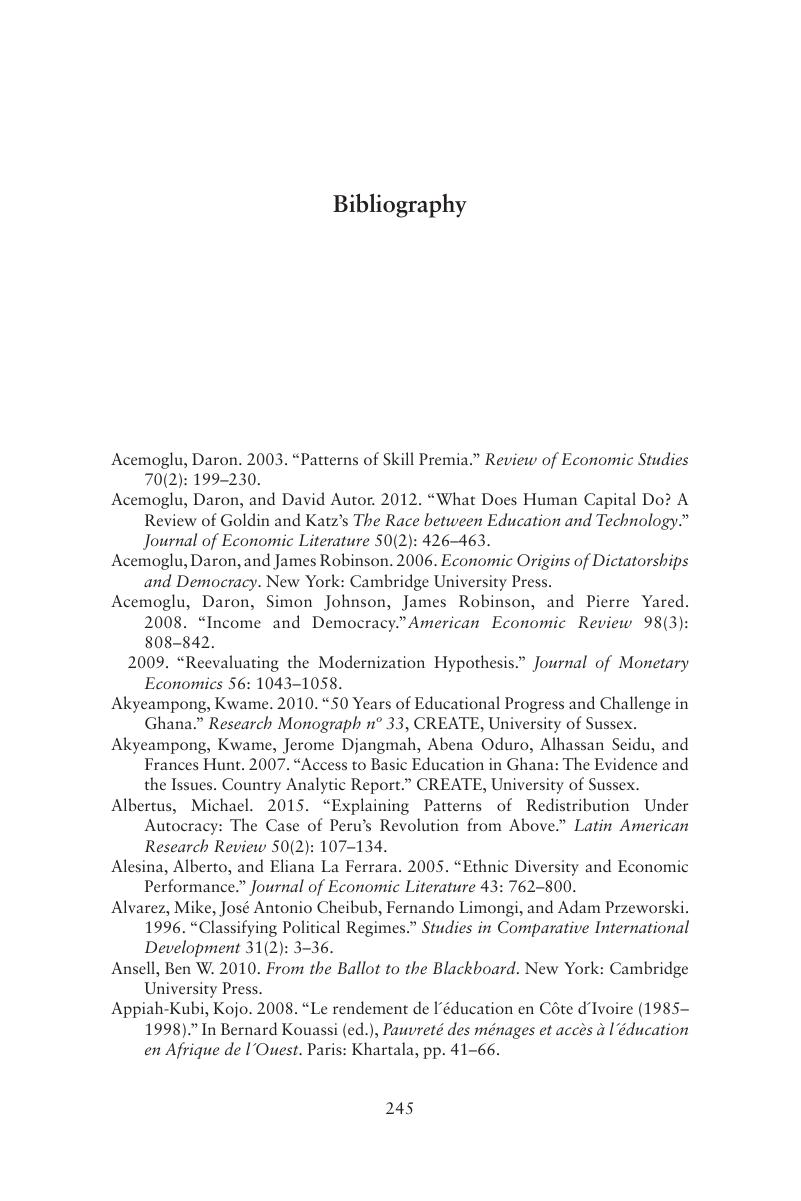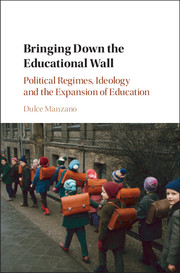Book contents
- Bringing Down the Educational Wall
- Bringing Down the Educational Wall
- Copyright page
- Dedication
- Contents
- Figures
- Tables
- Acknowledgments
- 1 Introduction
- 2 The Institutional Link
- 3 Tracing the Impact of Political Regimes
- 4 The Ideology of Dictatorships
- 5 Political Regimes, Economic Development and the Expansion of Education
- 6 Political Regimes and Education Policies: Case Analysis
- 7 The Impact of Inequality on Education
- Conclusion
- Appendix A Codebook of Variables
- Bibliography
- Index
- References
Bibliography
Published online by Cambridge University Press: 22 June 2017
- Bringing Down the Educational Wall
- Bringing Down the Educational Wall
- Copyright page
- Dedication
- Contents
- Figures
- Tables
- Acknowledgments
- 1 Introduction
- 2 The Institutional Link
- 3 Tracing the Impact of Political Regimes
- 4 The Ideology of Dictatorships
- 5 Political Regimes, Economic Development and the Expansion of Education
- 6 Political Regimes and Education Policies: Case Analysis
- 7 The Impact of Inequality on Education
- Conclusion
- Appendix A Codebook of Variables
- Bibliography
- Index
- References
Summary

- Type
- Chapter
- Information
- Bringing Down the Educational WallPolitical Regimes, Ideology, and the Expansion of Education, pp. 245 - 255Publisher: Cambridge University PressPrint publication year: 2017

